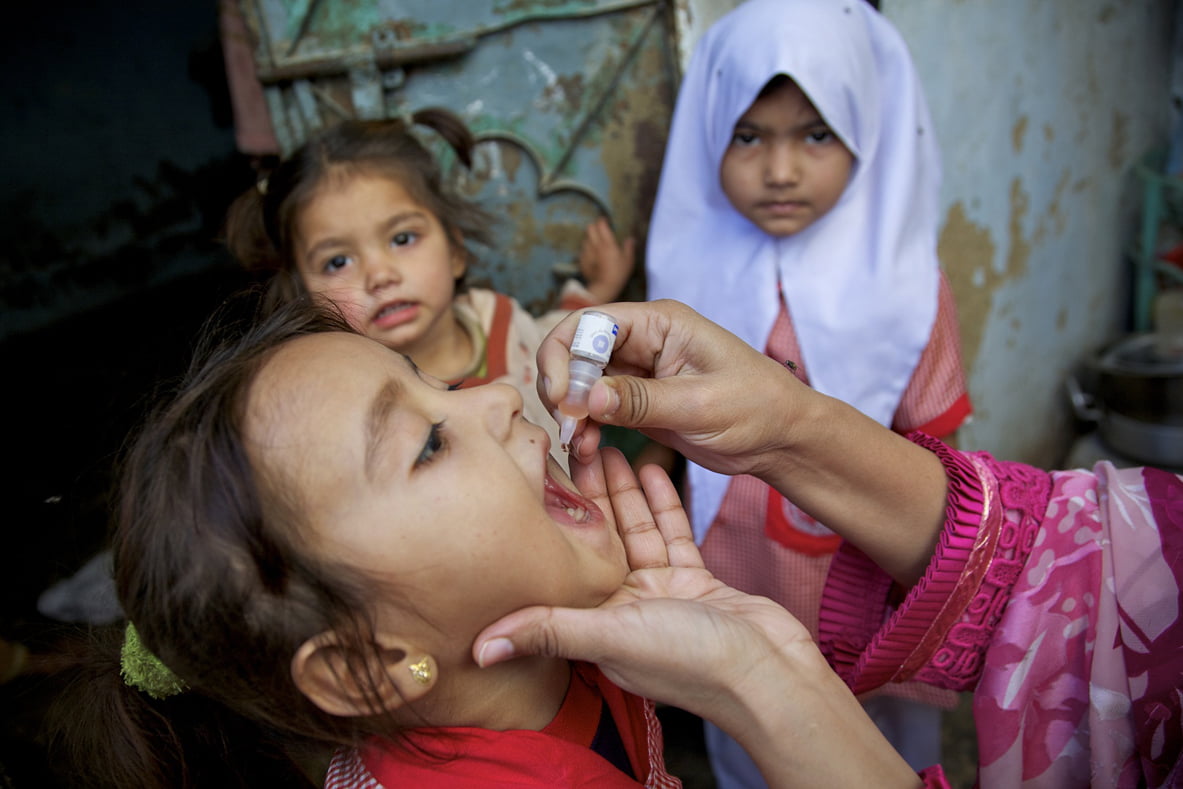Polio is irrelevant in most of the world. Once the terror of many childhoods, for most people it exists only as a name on a vaccine. It’s an infectious viral disease that causes fever, fatigue, headache, vomiting – and sometimes paralysis and death. There is no cure, but it is vaccine-preventable. In fact, since 1988, the polio vaccine has decreased the number of cases by 99% – from about 350,000 cases to 359.
Every country in the world but Pakistan and Afghanistan has managed to interrupt polio transmission through vaccinating for the disease. Getting all the way to zero, however, has been a tremendous challenge. Some countries have interrupted transmission only to see it briefly return. Tajikistan had a polio outbreak in 2010 after being polio-free for eight years. Ukraine saw two polio cases in 2010 when the war interrupted vaccine schedules.
Polio is a tricky vaccine. If your coverage isn’t nearly perfect, the oral vaccine itself can cause polio. In a tiny number of people, it leads to vaccine-associated paralytic polio, paralysis that results from the polio vaccine. It can also cause circulating vaccine-derived polioviruses – actual infectious cases of polio that result from the vaccine. They don’t infect people who have been vaccinated for polio, but they are dangerous to people who have not.
As we push down the numbers of people infected by polio through vaccination, the vaccination itself because responsible for a large percentage of overall cases. In 1988, when 350,000 people had polio, the hundred people or so who got it from the vaccine weren’t a major factor in decision-making. Now that only 350 are infected, the cases caused by vaccines are a major part of our polio problem.
The Switch
That’s why, over the month of April, the entire world is switching from trivalent oral polio vaccine – which protects against three kinds of polio – to bivalent oral polio vaccine, which only protects against two kinds. It’s a sign that we’re making progress in wiping polio off the planet. It’s also a global health milestone; making the switch requires logistically complex implementation in every country of the world.
The reasons we’re switching are exciting. One of the three kinds of polio virus – type 2 – was eradicated in 1999. After seven years, we can be confident it’s really gone. Vaccinating for type 2 when type 2 isn’t out there any more carries risks. The vaccine for virus type 2 was responsible for a lot of the cases of vaccine-related polio – 90% of circulating vaccine-derived polioviruses cases, and approximately 40% of vaccine-associated paralytic polio. Dropping the vaccine for virus type 2 will make polio vaccination safer for everyone.
Now comes the switch process. As the WHO puts it, “All health facilities in every country must stop using trivalent polio vaccine on one day within the 2-week switch period from 18 April to 1 May. Any remaining trivalent polio vaccine stock must be collected and destroyed according to national guidance.” Every health facility, everywhere. It takes a lot of coordination; WHO and national governments have been planning this process for a year.
The reason we’re switching now is mostly about data. Better data has taught us a lot about polio vaccination. The WHO was able to determine that that a bivalent vaccine is actually more effective against types 1 and 3 than a trivalent vaccine. The bivalent vaccine only became available a few years ago, so it took time to collect the data to figure this out. The switch is taking place in April because April is the low season for polio virus infection, another thing we’ve learned because of better global health data collection and analysis.
